Did you know that the position of the instruments is a kind of language with which a restaurant visitor can convey his message? By placing the fork and knife in a certain way, you give signs to the staff, which can be recognized and taken into account by a competent waiter.
So what is it - the language of forks and knives, and what simple rules of etiquette you need to know when visiting a restaurant?
The content of the article
-
Cutlery Sign Language
- Pause
- Serving the next dish
- End of the meal
Cutlery Sign Language
Restaurant etiquette regarding the placement of cutlery on a plate includes the basic steps of a meal. So, with the help of products, you can indicate a pause, serving the next dish and end.
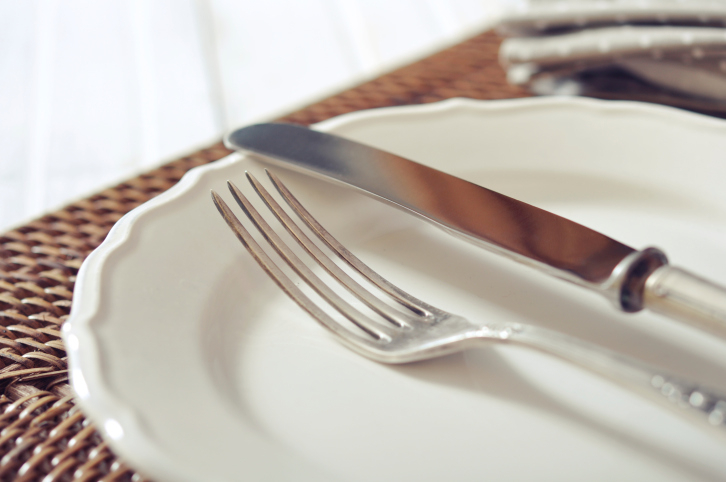
@ foodrepublic.com
Pause
If you need to leave for a while, but at the same time you still need the devices, then the pause in the meal can be conveyed in several ways. This way the waiter will understand that you are not finished and will not remove your personal plate and cutlery.
The first method is as follows: the fork is placed on the plate with the prongs up, and the knife is placed on top, crosswise to each other. In this case, the knife looks to the left, and the fork is directed by the teeth to the right. This will make it clear to the staff that the meal is not finished, but that the next meal should be served later. The same gesture says: "Don't take it away!"
Second way. The fork is put on the edge of the plate on the left with the teeth down, and the knife on the right side with the blade towards you. The handles of the products rest on the table. This method is used if there is no free space on the plate.

@ belnovosti.by
Third way. Used when the plate is empty, but you just decided to pause. In this case, the fork is located on the left side with the teeth up or down, and the knife is on the right, towards the fork. The letter "L" will turn out, but at the same time they should not touch each other.
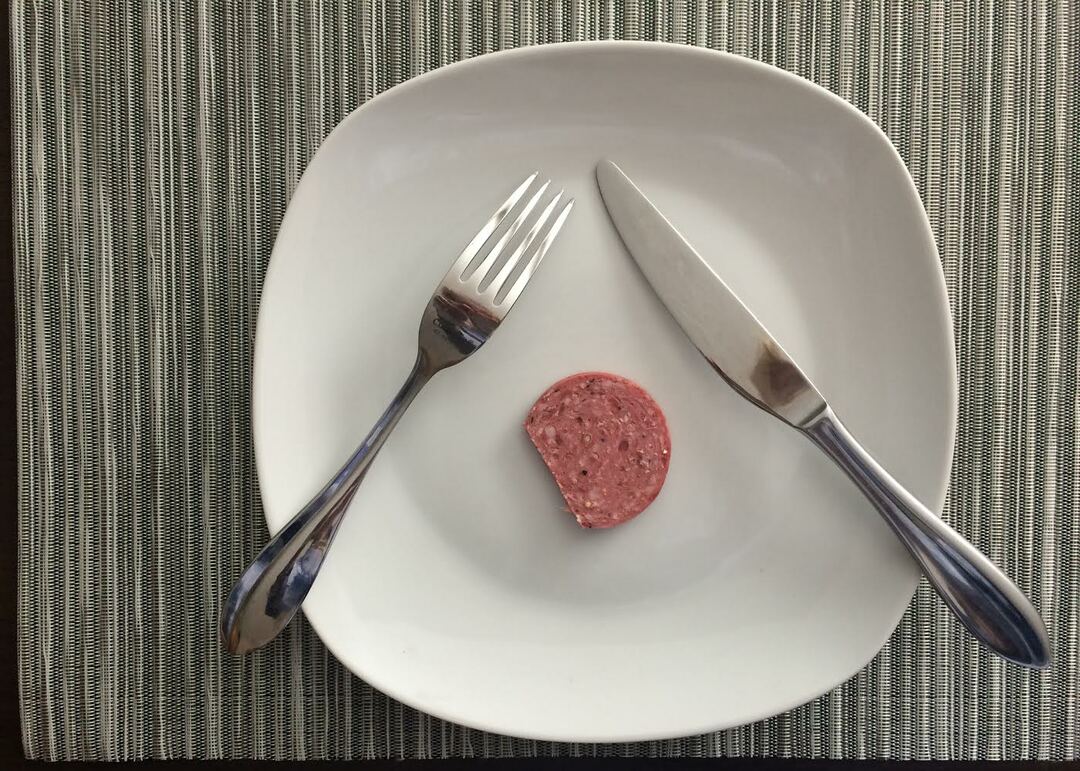
@ candacesmithetiquette.com
Fourth way. Designed if only a fork is used during a meal. To indicate a pause, it must be placed on the right side of the rim of the cymbal. In this case, the teeth look up, and the handle rests on the table.
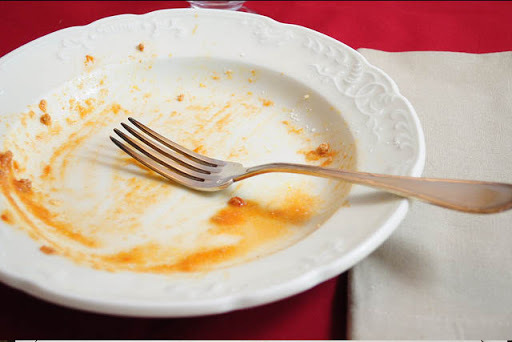
@ woman.ng
Serving the next dish
If your meal involves serving more than one course, you can use the cutlery to indicate that you are ready to serve the next one. To do this, it is enough to imagine that your plate is a clock. We place the fork with teeth at 12, and the knife with the tip at 9. This will place the fork on top of the knife. The whole "gesture" will be in the form of a cross.
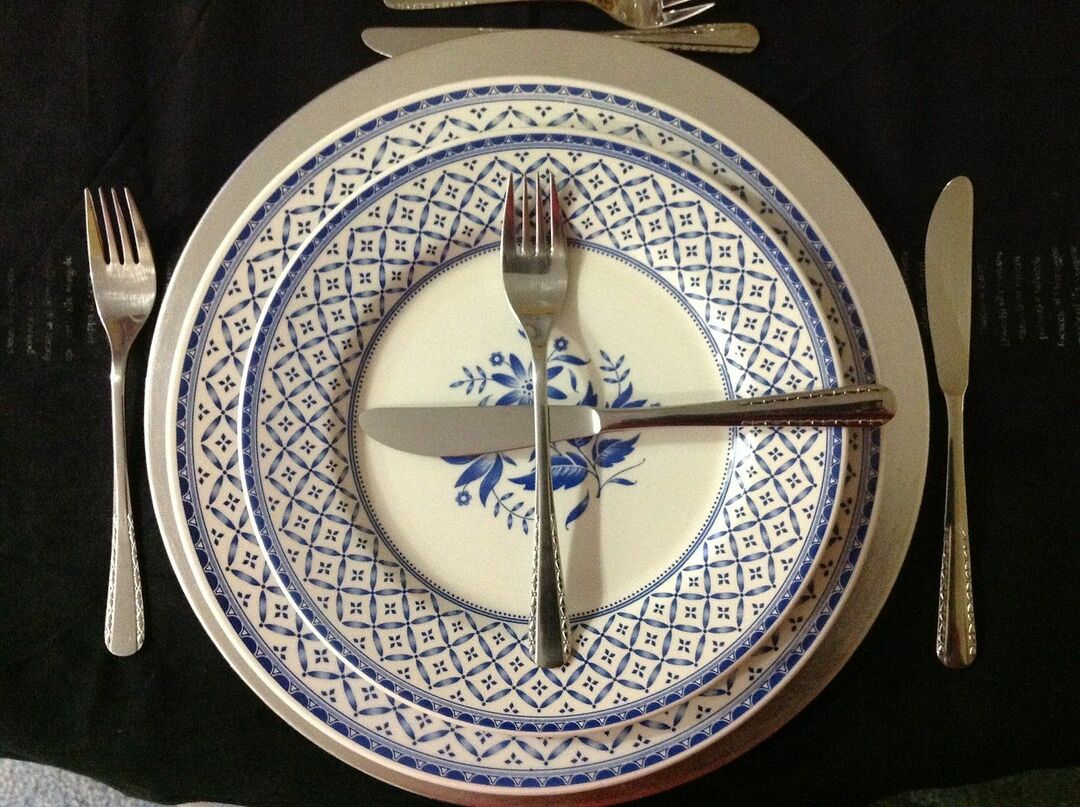
@ festivalgourmet.com
End of the meal
But with the end of the meal, you can express the whole range of emotions that you experienced from visiting the restaurant. Moreover, they can be both super positive and negative. But let's start with the classic ways, which indicate only that you have finished lunch or dinner:
- the fork is placed on the left evenly, the knife is on the right side and slightly tilted to the left;
- both devices are placed exactly along the rim of the plate, parallel to each other;
- the products are placed on the right, parallel (the teeth and the tip of the blade are directed towards the center of the plate);
- the devices are placed in the center exactly, also parallel.
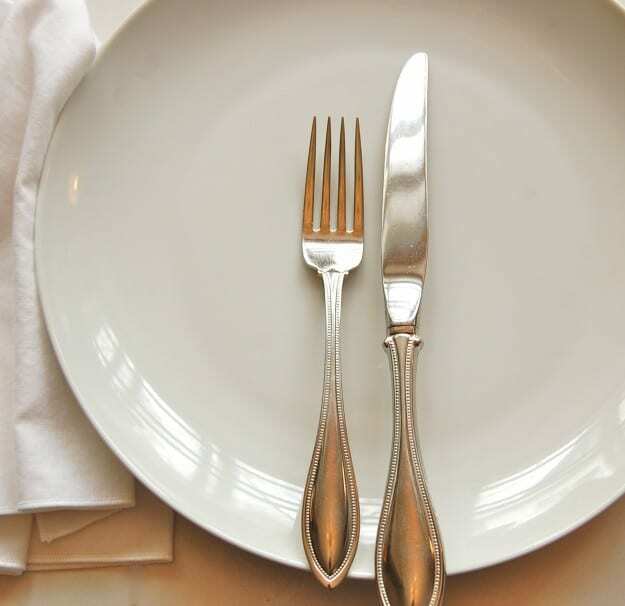
@ theartofdoingstuff.com
Now let's look at ways of positioning products, which indicate not only the end of the meal, but at the same time express other emotions:
- To express your pleasure, they need to be positioned in the center of the plate, evenly, parallel. In this case, both the teeth and the tip of the blade should point to the right. Literally it means: “Finished. The dish is excellent! "

@ freefoodphotos.com
- If you put the fork on the left side with the teeth to the center, and the knife on the right, with the tip of the blade to the fork, it means: “I finished my meal, I didn't like the dish”. In this case, the products should touch slightly - the teeth will lie on top or bottom of the knife, and the handles of the devices should be directed towards you. The same arrangement, but with the handles "away from you" means: "Finished the meal. I'm not satisfied with the service! "
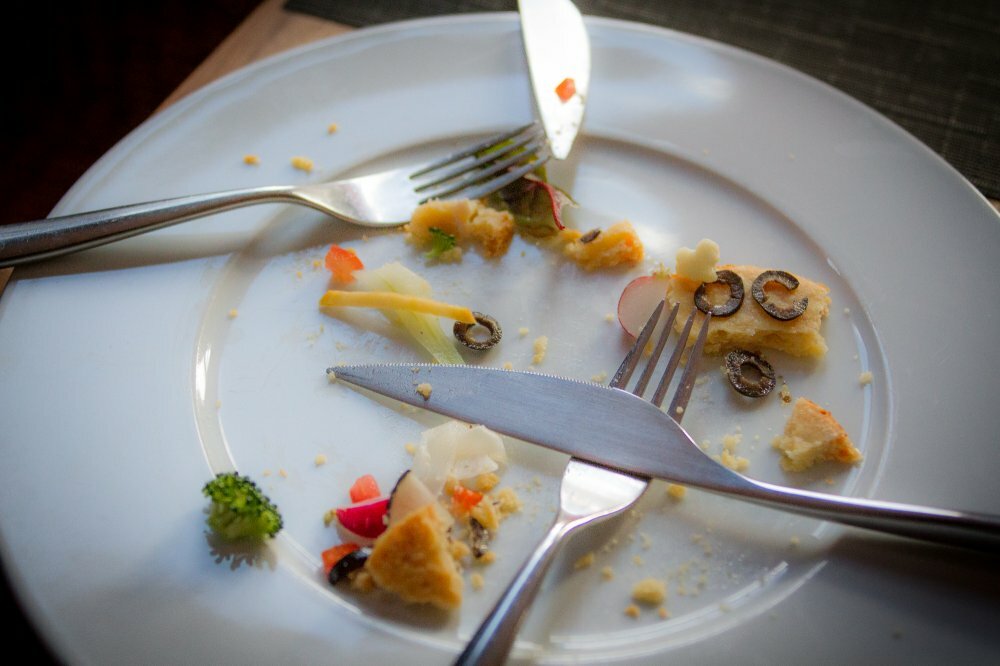
@ bobstronomie.fr
- Another way to indicate that you are unhappy with a dish is to crosswise place the items by sticking the tip of a knife between the tines of a fork.
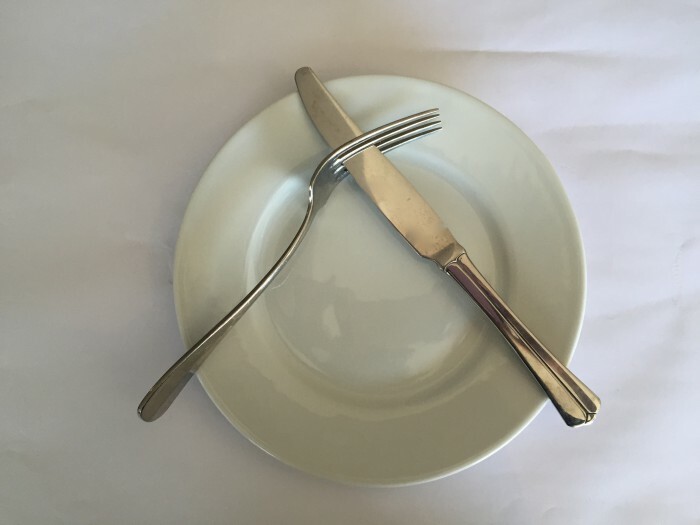
@ eatdrinkplay.com
- In order to require the arrangement of the devices to bring a book of complaints, it is enough to place them exactly along the edges of the plate. But at the same time, the handles of the products should be directed away from you. That is, the teeth and the blade towards you.
- If you want to make a mega compliment to the institution and say that you will continue to be their regular guest, then arrange the products as follows way: on the right side, lay the knife straight with the blade towards you and towards the center of the plate, and place it on top or next to it plug. Literally it means: “Excellent! I will be your regular customer! "

@ 2012books.lardbucket.org
In fact, the "language" of the instruments is very curious and interesting. If you do not like something, then it can be expressed without scandals and shouts, but simply by correctly positioning the fork and knife. Conversely, if you are completely delighted with the meal, then with the help of simple gestures, you can show your admiration for visiting a restaurant. Believe me, competent staff will immediately understand what you want to say by this.
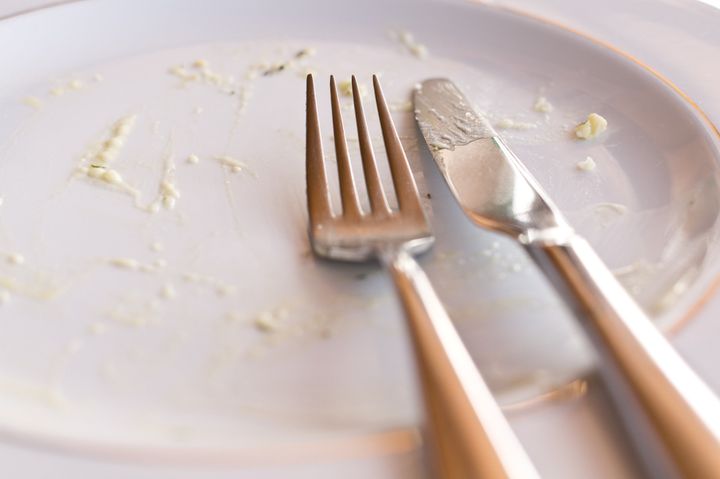
@ huffpost.com
Subscribe to our Social Networks


